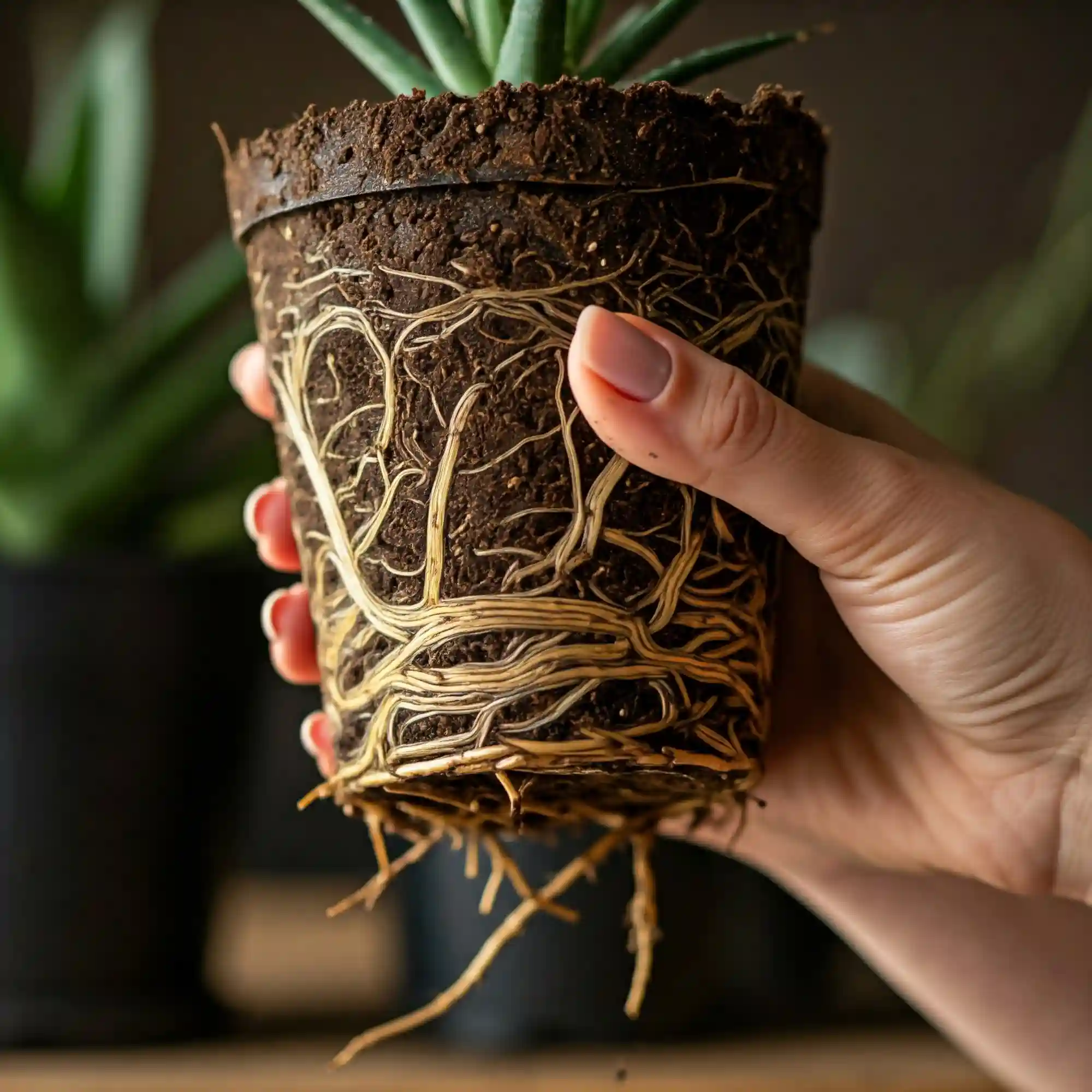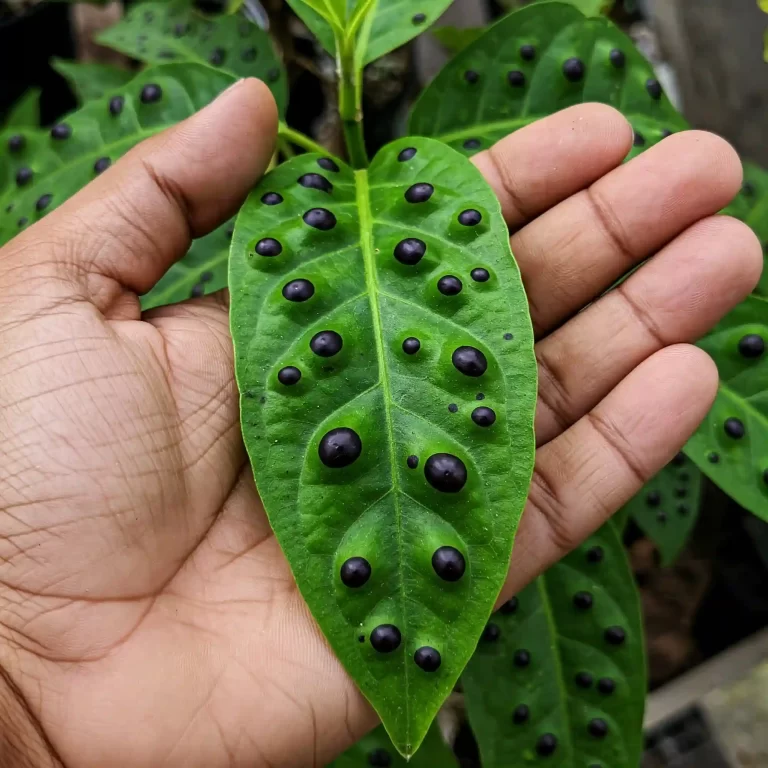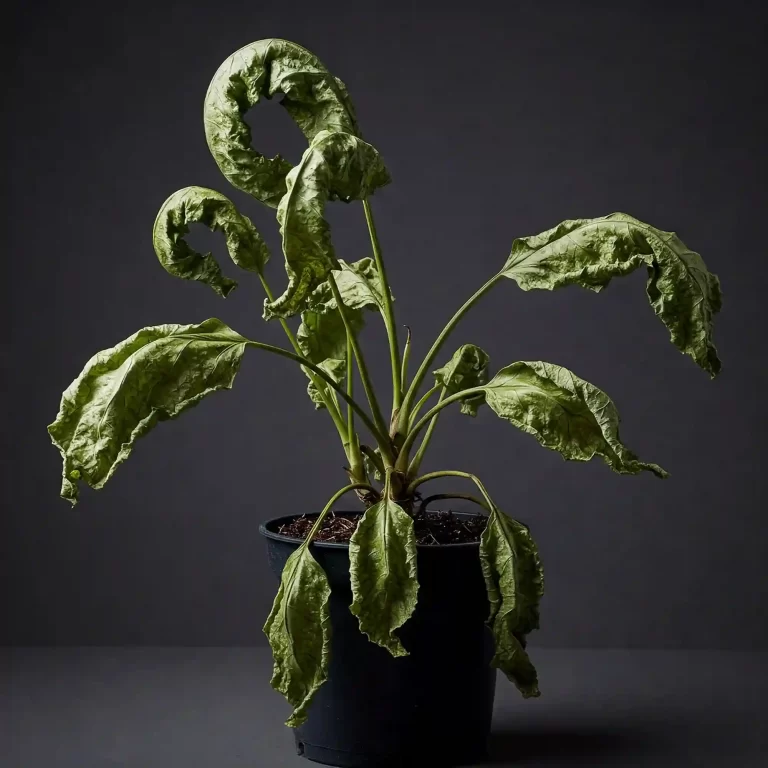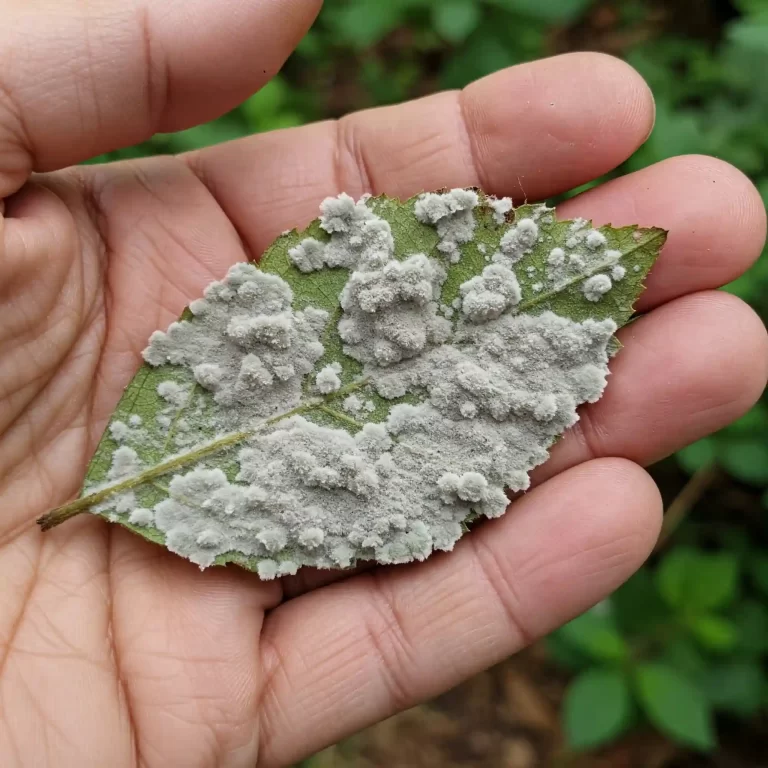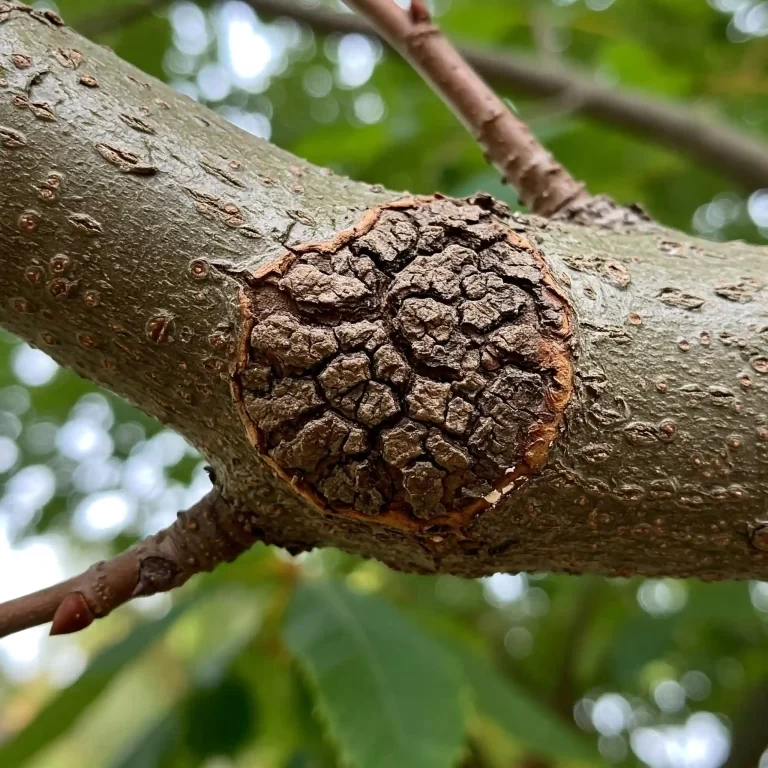Have you ever noticed your prized petunias suddenly wilting, despite regular watering? Or perhaps your strawberry plants are failing to thrive, their leaves turning yellow and their growth stunted? As a fellow gardener, I know how disheartening it can be to see your hard work and dedication seemingly wasted. You nurture your plants, providing them with the right amount of sunlight, water, and nutrients, yet they still succumb to mysterious ailments. One culprit that often lurks beneath the soil, unseen until it’s too late, is black root rot. This devastating fungal disease can wreak havoc on a wide range of plants, from beloved ornamentals to essential crops. But don’t despair! With the right knowledge and proactive approach, you can effectively prevent and manage black root rot, ensuring the health and vitality of your garden.
What is Black Root Rot?
Black root rot isn’t caused by a single organism, but by a cunning and widespread soilborne fungus called Thielaviopsis basicola. This microscopic pathogen is a master of disguise, often going unnoticed until significant damage has been done to your plants’ root systems. I’ve seen firsthand how quickly this disease can spread if left unchecked.
The fungus attacks the very foundation of your plants: their roots. It infects and gradually destroys root tissue, hindering the plant’s ability to absorb water and essential nutrients from the soil. This disruption in nutrient and water uptake manifests in a variety of above-ground symptoms, which we’ll explore later. The fungus thrives in specific conditions, which is crucial to understand for prevention. These include:
- Poor Drainage: Excessively wet soil creates an ideal environment for Thielaviopsis basicola to flourish. I’ve observed that plants in poorly draining pots or areas of the garden are particularly susceptible.
- Overwatering: While plants need water to survive, overwatering can saturate the soil, depriving roots of oxygen and creating conditions favorable for fungal growth. This is a common mistake I see even experienced gardeners make.
- Alkaline Soil: Thielaviopsis basicola prefers alkaline soil conditions (a pH above 7). Testing your soil pH can be a valuable step in preventing this disease.
- Cool Temperatures: While the fungus can persist in a range of temperatures, cooler soil temperatures can slow down plant growth, making them more vulnerable to infection.
Understanding these conditions is the first step in combating black root rot. By creating a less hospitable environment for the fungus, you can significantly reduce the risk of infection.
Thielaviopsis basicola, the culprit behind black root rot, is a fascinating and complex organism. Its life cycle involves the production of different types of spores, allowing it to survive in various conditions and spread effectively. These spores can persist in the soil for extended periods, even in the absence of host plants, making it a persistent threat.
The fungus infects plants through their roots, penetrating the root tissue and causing characteristic dark lesions. These lesions disrupt the flow of water and nutrients, leading to the decline of the plant. The severity of the infection depends on various factors, including the susceptibility of the plant, the environmental conditions, and the amount of fungal inoculum present in the soil.
I’ve learned that early detection is key in managing black root rot. Recognizing the symptoms and understanding the conditions that favor the fungus can make all the difference in protecting your precious plants.
Identifying Black Root Rot: Recognizing the Symptoms
Identifying black root rot early can be the difference between saving your plants and losing them. As an avid gardener, I’ve learned to be vigilant, regularly inspecting my plants for any signs of distress. You should do the same. The symptoms of black root rot can sometimes mimic other plant problems, so it’s essential to know what to look for. Here are some key indicators:
- Stunted Growth: One of the first signs I often notice is that the affected plants simply aren’t growing as vigorously as they should. You might observe that they are smaller than other plants of the same variety or that their growth has slowed significantly.
- Yellowing and Wilting of Foliage: This is a classic symptom of many root problems, including black root rot. The leaves may start to turn yellow (chlorosis), particularly the lower leaves, and the plant may begin to wilt, even when the soil is moist. I’ve seen this happen quite rapidly in susceptible plants like petunias.
- Black Lesions on Roots: This is the most definitive sign of black root rot. When you gently remove the plant from its pot or carefully excavate around the base of the plant in the garden, you’ll notice dark, often black, lesions or patches on the roots. These lesions may be small at first but can spread to encompass large portions of the root system as the disease progresses.
- Root Decay and Disintegration: As the fungus continues to attack the roots, the root tissue will begin to decay and disintegrate. The roots may appear mushy or water-soaked and may easily break apart when handled. I’ve observed that in severe cases, the entire root system can be reduced to a black, decaying mass.
- Reduced Plant Vigor: Overall, the plant will appear weak and unhealthy. It may produce fewer flowers or fruits, and its leaves may be smaller than usual. You might notice that the plant is more susceptible to other diseases or pests.
- Plant Death in Severe Cases: If left unchecked, black root rot can ultimately lead to the death of the plant. This is particularly true for young plants or those that are already stressed.
It’s important to differentiate black root rot from other root problems, such as root rot caused by other fungi (like Pythium or Phytophthora) or root damage caused by pests or physical injury. While some of the symptoms may overlap, there are some key differences. For example, root rot caused by Pythium often results in slimy, brown roots, while black root rot is characterized by distinct black lesions.
If you suspect black root rot, I recommend carefully examining the roots of your affected plants. Look for the characteristic black lesions and decay. If you’re unsure, you can consult with your local agricultural extension office or a plant pathologist for a definitive diagnosis.
Which Plants are Susceptible to Black Root Rot?
Black root rot, caused by the persistent fungus Thielaviopsis basicola, doesn’t discriminate entirely, but it certainly has its preferences. As I’ve spent years cultivating various plants, I’ve noticed certain species are more prone to this disease than others. You might be surprised to learn just how wide the host range is. This knowledge is crucial for you in planning your garden and taking preventative measures.
Here’s a breakdown of some commonly affected plants:
Ornamentals:
- Petunias: These popular flowering plants are highly susceptible. I’ve frequently encountered black root rot in petunias, especially those grown in containers with poor drainage.
- Vinca (Periwinkle): Another common ornamental, vinca is also quite vulnerable. I’ve observed that vinca groundcover, in particular, can be affected if the soil remains consistently moist.
- Pansies and Violas: These cool-season favorites are often targeted by black root rot, especially during periods of cool, wet weather.
- Cyclamen: These beautiful flowering plants are also susceptible, particularly when overwatered.
- Poinsettia: A popular holiday plant, poinsettias can be affected by black root rot if the soil is kept too wet.
- Geranium: Both zonal and ivy geraniums can be affected, especially in poorly draining soils.
- Holly: Various holly species are susceptible to black root rot, which can cause significant damage to these long-lived shrubs and trees.
Crops:
- Strawberry: Black root rot can be a significant problem for strawberry growers, reducing yields and plant vigor. I’ve seen entire strawberry patches decimated by this disease.
- Bean: Both common beans and other bean varieties can be affected, especially in heavy, wet soils.
- Cotton: In agricultural settings, black root rot can cause substantial losses in cotton crops.
- Tobacco: This economically important crop is also susceptible to Thielaviopsis basicola.
Other Susceptible Plants:
The list doesn’t stop there. Thielaviopsis basicola can infect a wide range of other plants, including:
- Woody Ornamentals: Many trees and shrubs, such as boxwood, azalea, and rhododendron, can be affected.
- Herbaceous Ornamentals: Numerous flowering perennials and annuals are also susceptible.
- Various Crops: Several vegetable and field crops can be affected, depending on the specific environmental conditions and the presence of the pathogen.
This extensive host range highlights the importance of preventative measures. If you’re growing any of these susceptible plants, you must be extra vigilant in monitoring for symptoms and implementing appropriate control strategies.
Here’s a table summarizing some of the most commonly affected plants:
Susceptible Plants Table
| Plant Type | Example(s) | Common Issues |
| Ornamental | Petunia, Vinca, Pansy, Holly, Cyclamen, Geranium | Wilting, yellowing, stunted growth, root decay |
| Crop | Strawberry, Bean, Cotton, Tobacco | Reduced yield, plant decline, root damage |
| Woody Ornamental | Boxwood, Azalea, Rhododendron | Dieback, stunted growth, root rot |
I’ve found that understanding which plants are most at risk helps me prioritize my monitoring efforts and implement targeted prevention strategies.
Preventing Black Root Rot: Proactive Plant Care
Prevention, as they say, is better than cure, and this is especially true when it comes to black root rot. As a gardener, I’ve learned that taking proactive steps to create a healthy environment for my plants is the most effective way to prevent this devastating disease. You too, can create a thriving garden by focusing on these key preventative measures:
- Ensure Proper Soil Drainage: This is perhaps the most crucial step in preventing black root rot. Thielaviopsis basicola thrives in excessively moist conditions, so ensuring that your soil drains well is essential. I’ve found that amending heavy clay soils with organic matter, such as compost or well-rotted manure, can significantly improve drainage. You can also consider planting in raised beds or containers with drainage holes to further enhance drainage.
- Avoid Overwatering: While plants need water to survive, overwatering can create the perfect conditions for black root rot to develop. I recommend watering deeply but infrequently, allowing the soil to dry out slightly between waterings. You can check the soil moisture by inserting your finger about an inch into the soil. If it feels moist, wait a few more days before watering.
- Maintain Appropriate Soil pH: Thielaviopsis basicola prefers alkaline soil conditions (a pH above 7). Testing your soil pH can help you determine if it needs adjusting. You can use a soil test kit, readily available at garden centers, to test your soil pH. If your soil is too alkaline, you can amend it with sulfur or other acidifying agents.
- Use Disease-Free Planting Material: When purchasing new plants, I always recommend inspecting them carefully for any signs of disease. Look for healthy roots and avoid plants with any signs of decay or discoloration. Purchasing plants from reputable nurseries can also help ensure that you’re getting disease-free stock.
- Practice Crop Rotation: If you’re growing susceptible crops, such as strawberries or beans, practicing crop rotation can help reduce the buildup of Thielaviopsis basicola in the soil. I recommend avoiding planting susceptible crops in the same area year after year. Instead, rotate them with non-susceptible crops.
- Sanitation: Removing and destroying infected plant debris can help prevent the spread of the disease. I always recommend promptly removing any infected plants or plant parts from the garden and disposing of them properly. Do not compost infected plant material, as this can spread the disease.
By implementing these preventative measures, you can create a less hospitable environment for Thielaviopsis basicola and significantly reduce the risk of black root rot in your garden. I’ve found that a proactive approach to plant care is the most effective way to maintain a healthy and thriving garden.
Treating Black Root Rot: Management Strategies
Despite our best efforts at prevention, sometimes black root rot can still take hold. As a gardener, I’ve had my share of battles with this persistent disease, and I’ve learned that a multi-pronged approach is often the most effective. You, too, can take control of the situation by understanding the available treatment options and implementing them strategically. It’s important to note that completely eradicating black root rot can be challenging, but with consistent effort, you can manage the disease and help your plants recover.
Here are some key management strategies:
- Fungicides: While fungicides can be used to manage black root rot, their effectiveness is often limited. I’ve found that they are most effective when used as a preventative measure or in the early stages of infection. It’s crucial to choose a fungicide that is specifically labeled for use against Thielaviopsis basicola. Always follow the instructions on the product label carefully and be mindful of the potential environmental impact of fungicide use.
- Biological Control Agents: These beneficial microorganisms can help suppress Thielaviopsis basicola in the soil. I’ve had success using products containing beneficial bacteria or fungi, such as Trichoderma species. These agents can help outcompete the black root rot fungus and promote healthy root growth.
- Soil Solarization: This technique involves using solar energy to heat the soil and kill pathogens. I’ve used this method in my garden by covering the affected area with clear plastic sheeting during the hottest part of the summer. The trapped heat can effectively reduce the population of Thielaviopsis basicola in the soil.
- Improving Drainage: If poor drainage is a contributing factor, improving drainage is essential for managing black root rot. As I mentioned earlier, amending the soil with organic matter, planting in raised beds, or improving drainage in containers can help create a less favorable environment for the fungus.
- Removing and Destroying Infected Plants: In severe cases, it may be necessary to remove and destroy infected plants to prevent the disease from spreading to other plants in your garden. I know this can be a difficult decision, but it’s often the most effective way to protect your remaining plants. Be sure to dispose of infected plants properly, do not compost them.
Remember, consistency is key when managing black root rot. Regularly monitor your plants for symptoms and implement appropriate control measures as needed. With diligent care, you can help your plants overcome this disease and thrive.
Black Root Rot in Specific Situations
Black root rot can manifest differently depending on the type of plant it infects and the specific growing conditions. As a gardener, I’ve learned that understanding these nuances is crucial for effective management. You might be facing unique challenges depending on whether you’re growing petunias in hanging baskets, strawberries in raised beds, or established holly trees in your landscape. Let’s explore some specific scenarios:
Black Root Rot on Potted Petunias:
Petunias, with their vibrant blooms, are a popular choice for containers and hanging baskets. However, they are also highly susceptible to black root rot, especially when grown in poorly draining containers. I’ve noticed that overwatering is a common culprit in these situations.
- Key Considerations:
- Container Drainage: Ensure that your containers have adequate drainage holes to prevent water from accumulating at the bottom.
- Watering Practices: Water deeply but infrequently, allowing the soil to dry out slightly between waterings.
- Potting Mix: Use a well-draining potting mix that is light and airy.
- Early Detection: Regularly inspect the roots for any signs of black lesions or decay.
Black Root Rot on Strawberry Plants in Raised Beds:
Raised beds offer excellent drainage and can be ideal for growing strawberries. However, black root rot can still be a problem, especially if the soil composition is not ideal. I’ve found that heavy clay soils can retain too much moisture, even in raised beds.
- Key Considerations:
- Soil Composition: Amend heavy clay soils with organic matter, such as compost or well-rotted manure, to improve drainage.
- Watering Practices: Water deeply but infrequently, and avoid overhead watering, which can promote fungal diseases.
- Crop Rotation: Rotate your strawberry plants with non-susceptible crops to reduce the buildup of Thielaviopsis basicola in the soil.
- Disease-Free Planting Material: Start with disease-free strawberry plants from a reputable nursery.
Black Root Rot on Holly Trees:
Holly trees are long-lived and can be a beautiful addition to any landscape. However, they are also susceptible to black root rot, which can cause significant damage and even death. I’ve observed that newly planted holly trees are particularly vulnerable.
- Key Considerations:
- Planting Location: Choose a planting location with well-draining soil.
- Planting Depth: Avoid planting holly trees too deeply, as this can promote root rot.
- Watering Practices: Water deeply but infrequently, and avoid overwatering, especially during establishment.
- Soil pH: Holly trees prefer slightly acidic soil, so test your soil pH and amend as needed.
By understanding these specific scenarios, you can tailor your prevention and management strategies to the particular plants you’re growing and the conditions they’re growing in. This targeted approach can significantly improve your success in combating black root rot.
Frequently Asked Questions (FAQ)
Over my years of gardening and interacting with fellow plant enthusiasts, I’ve encountered numerous questions about black root rot. You likely have some of these questions too, so I’ve compiled a list of frequently asked questions to provide you with clear and concise answers.
Identifying Black Root Rot:
- How to identify black root rot on potted petunias? Look for stunted growth, yellowing leaves (especially lower ones), and dark, often black, lesions on the roots. Check the drainage of the pot and ensure you’re not overwatering.
- What are the early signs of black root rot on vinca? Early signs include wilting, yellowing of the lower leaves, and overall slow growth. Carefully examine the roots for dark discoloration or lesions.
- Is it possible to mistake black root rot for other root problems? Yes, it is. Other fungal diseases, like Pythium or Phytophthora root rot, can cause similar symptoms. However, black root rot is specifically characterized by distinct black lesions on the roots. If you are unsure, it is best to consult with a local expert.
- Can black root rot spread from one plant to another? Yes, the fungal spores can spread through contaminated soil, water, or gardening tools. That’s why sanitation is so important.
Causes and Conditions:
- Why does black root rot thrive in poorly drained clay soil? Poor drainage creates excessively moist conditions that favor the fungal pathogen. Clay soils retain water, exacerbating the problem and creating an ideal breeding ground for the fungus.
- Does overwatering contribute to black root rot in cyclamen? Absolutely. Overwatering saturates the soil, depriving roots of oxygen and creating conditions that are highly conducive to black root rot development.
- How does alkaline soil pH affect black root rot development? Thielaviopsis basicola prefers alkaline soil conditions (a pH above 7). Therefore, alkaline soil can increase the risk of infection.
- Are there any specific weather conditions that promote black root rot? Cool, wet weather can create ideal conditions for the fungus to thrive, especially in poorly drained soils.
Treatment and Control:
- Effective organic treatments for controlling black root rot in pansies? Improving soil drainage by adding compost, using compost tea, and applying beneficial microbes (like Trichoderma) can help manage the disease organically.
- Best methods for preventing black root rot in new strawberry plantings? Starting with disease-free plants, ensuring proper soil drainage, practicing crop rotation, and avoiding overwatering are crucial preventative measures.
- Can soil solarization help control black root rot in garden beds? Yes, soil solarization can be an effective way to reduce the population of Thielaviopsis basicola in the soil.
- Is there a cure for black root rot? While completely eradicating the fungus can be difficult, you can manage the disease and help your plants recover through a combination of cultural practices, biological controls, and, in some cases, fungicides. Prevention is the most effective strategy.
- If I find black root rot in one of my potted plants, should I repot it? Yes, repotting the plant into fresh, well-draining potting mix in a clean pot can help. Be sure to remove as much of the old, infected soil as possible from the roots.
These are just a few of the many questions I’ve encountered regarding black root rot. If you have any further questions, don’t hesitate to consult with your local agricultural extension office or a plant pathologist. They can provide you with specific advice tailored to your region and growing conditions.
Conclusion
Black root rot can be a formidable foe in the garden, but it’s not an unbeatable one. As I’ve shared my experiences and knowledge with you, I hope you feel empowered to take on this challenge. You now understand that by focusing on prevention, early detection, and appropriate management strategies, you can protect your precious plants from this devastating disease.
Remember these key takeaways:
- Prevention is Paramount: Creating a healthy environment for your plants is the most effective way to prevent black root rot. Focus on ensuring proper soil drainage, avoiding overwatering, maintaining appropriate soil pH, using disease-free planting material, practicing crop rotation, and maintaining good sanitation practices.
- Early Detection is Key: Regularly inspect your plants for any signs of distress, including stunted growth, yellowing or wilting foliage, and black lesions on the roots. Early detection can make all the difference in saving your plants.
- Integrated Management Strategies: If you do encounter black root rot, a combination of cultural practices, biological controls, and, in some cases, fungicides can help manage the disease and promote plant recovery.
I encourage you to continue learning and exploring the world of plant health. There are many valuable resources available, including your local agricultural extension office, plant pathology experts, and online gardening communities. By staying informed and sharing your experiences with others, you can become a more confident and successful gardener.
I wish you all the best in your gardening endeavors! May your plants thrive and your garden flourish.
